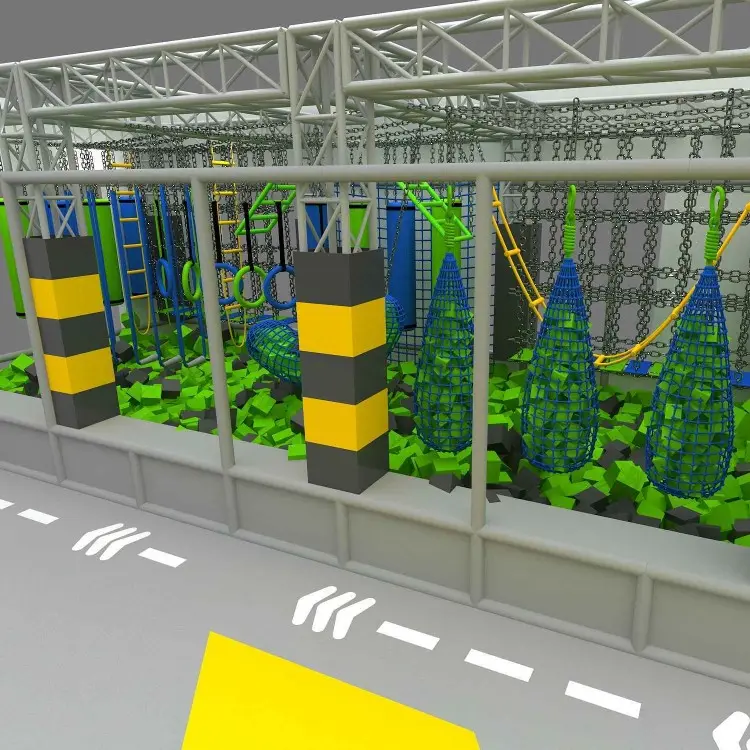Essential Safety Gear for Climbing Walls
Harness and Helmet Safety Standards
Safety standards for climbing gear really matter when it comes to staying safe on climbing walls. Groups such as the International Climbing and Mountaineering Federation known as UIAA along with European Norm or EN establish strict requirements that make sure climbing equipment works properly. Take helmets for example those meeting EN standards have specific impact ratings which help reduce head injuries if someone takes a fall. The harnesses that pass UIAA tests tend to be made from stronger materials so they hold up better under stress and keep climbers attached securely. Looking at numbers from these safety bodies shows something interesting too fewer people get hurt when they wear properly certified gear. Putting these safety practices into place creates a much safer space for everyone who climbs, whether they're beginners or experienced climbers. Just remember always check that your helmet and harness meet recognized safety standards before heading onto any climbing wall.
Rope and Carabiner Maintenance
Keeping ropes and carabiners in good shape isn't just recommended it's absolutely necessary if climbers want to stay safe. Regular checks help spot problems before they become serious issues. Most experienced climbers look over their gear every month for ropes and check carabiners at least once a week. What exactly should we be watching for? Frayed strands, unusual stretchiness, or anything that looks bent out of shape all signal trouble ahead. The numbers don't lie either research shows that neglected equipment fails far more often than properly maintained gear, sometimes with devastating results. When climbers follow basic maintenance routines, their gear lasts longer and works better too. Following these simple practices makes climbing walls safer places for everyone involved, reducing the chances of accidents caused by worn out equipment.
Proper Training and Supervision Protocols
Staff Training Requirements
Safety at climbing walls really comes down to how good the staff is at their job. Staff members working at climbing facilities should have proper training certificates from places like the Climbing Business Journal or similar organizations. These certs cover all sorts of important stuff - things like knowing how to check harnesses, spotting techniques, and what to do during emergencies. Most good facilities require their staff to take refresher courses every year or so because safety standards change over time. One gym we visited had staff who could spot potential issues before they became problems. Their climbers felt much safer knowing someone was watching out for them. That kind of peace of mind makes all the difference, which is why spending money on quality staff training isn't just nice to have, it's absolutely necessary for any climbing business that wants to keep people coming back.
Participant Safety Briefings
Safety briefings for climbers form a critical component of any climbing wall operation, acting as the frontline protection against potential mishaps. Before anyone starts scaling walls, these sessions make sure everyone knows what safety rules apply at each height level. The main topics covered usually involve how to properly fit and adjust climbing harnesses, mastering basic belay methods, and recognizing when certain moves just aren't safe for particular skill levels. Climbing instructors often stress how important these introductory talks really are. People who take the time to listen carefully during these briefings tend to follow through with safety procedures much better than those who rush past them. They also show more awareness while climbing, which makes a real difference in preventing injuries.
Fall Prevention and Landing Zone Preparation
Controlled Falling Techniques
Learning controlled falling techniques really cuts down on injury risks when climbing. Most climbing gyms offer training sessions where people get hands-on experience with safe falling methods. Climbers often start by practicing falls while keeping their knees bent to cushion the blow, then work on rolling movements that spread out the impact across different parts of the body. When climbers actually know what to do during a fall, they tend not to panic so much mid-air, which makes all the difference on vertical surfaces. The numbers back this up too – studies show climbers who've had proper fall training report way fewer bruises and sprains than folks who wing it. That's why serious climbers always make time for these basic but life-saving skills before heading up any wall.
Crash Pad and Matting Specifications
Crash pads and good matting really matter when it comes to staying safe after those inevitable climbing falls. Safety isn't just about having these things around though they need to meet certain standards too. The best crash pads use high density foam and get placed just right so they actually work to soften impacts and stop serious injuries. Matting needs full coverage over where people land, no gaps allowed, and definitely shouldn't move around during a fall. The foam inside has got to absorb enough shock to make a real difference. Climbing gyms that invest in quality pads positioned properly see way fewer injuries according to research data. This makes sense because proper equipment setup literally saves skin when things go wrong on the wall.

Equipment Inspection and Maintenance Routines
Daily Safety Checklists
Daily safety checklists make all the difference when it comes to keeping equipment working properly and making sure climbing walls stay safe places for everyone. A good checklist will typically include things like checking harnesses for wear and tear, looking at ropes for any signs of damage, and making certain anchors are secure and properly attached. Most climbing gyms have these routines built into their operations because accident prevention isn't just about following rules - it's about lives. Standards organizations actually set guidelines suggesting how often different components need checking based on usage levels, but experienced staff know from experience that some items simply demand closer attention than others.
Long-Term Equipment Durability Testing
Testing climbing gear over extended periods helps figure out if it's really safe and how long it'll last before needing replacement. Facilities run various tests regularly, looking at things like how much weight the gear can hold and checking for signs of wear after repeated use. These aren't just random checks either they follow specific industry standards that have been developed through years of experience. When gyms and outdoor centers stick to these established protocols, they're doing what's necessary to keep climbers from getting hurt by faulty or worn-out equipment down the road.
Climbing Wall Design and Structural Safety
Wall Anchoring and Load-Bearing Standards
The safety of climbing walls really depends on good wall anchoring and following proper load bearing guidelines. When designing these anchor systems, engineers look at physics concepts and materials properties to make sure they can handle whatever weight gets thrown at them without failing. Most climbing facilities have had issues where anchors gave way because someone didn't calculate the loads correctly. According to various safety reports, when anchors are properly installed and maintained, climbers stay safe and the equipment lasts much longer than it would otherwise. Some gyms even keep detailed records of their anchor points just to be extra cautious.
Surface Material and Grip Optimization
What kind of materials go into making climbing walls really matters when it comes to how well someone can grip and stay safe while climbing. Most modern climbing gyms use composite materials that try to copy the feel of actual rocks, giving climbers something familiar to grab onto. The roughness of the surface and what it's made from makes all the difference in whether a person can hold on securely or not. A good grip means fewer slips and falls, obviously. Studies have shown that climbers report better experiences on walls constructed with these specialized materials, and they tend to get injured less often too. Of course, no material is completely foolproof, but getting the right balance between realism and safety remains key for both recreational climbers and serious athletes alike.
Frequently Asked Questions
What are the essential safety gear requirements for climbing walls?
Safety gear for climbing walls includes helmets, harnesses, ropes, and carabiners that meet industry safety standards, ensuring climbers are well-protected during activities.
Why is routine equipment maintenance crucial?
Regular maintenance allows for early detection of wear and tear, minimizing risks and ensuring long-term reliability of climbing equipment.
How can fall prevention techniques improve climbing safety?
Controlled falling techniques reduce injury risks by teaching climbers how to fall safely, thereby minimizing panic and enhancing overall safety on climbing walls.
Why should climbing wall staff be certified?
Certified staff are better equipped with safety protocols, which result in safer environments and heightened participant confidence in climbing facilities.

